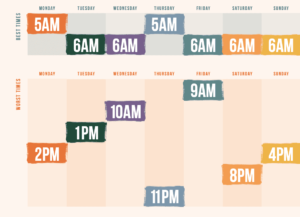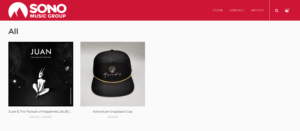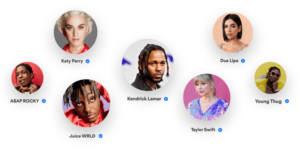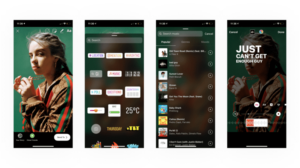Have you ever tried to reach out to media only to find the sound of a deep and resounding silence on the other end? Maybe you heard back from one or two people who gave you a firm, “Thanks, but no thanks.” If you’re really lucky you heard back from one underground blogger who loves the sound and will post right away – and that’s the only response you hear after sending dozens, if not hundreds of emails.
It’s not easy to grab the attention of media when you’re a band or artist who is not on the blogger’s radar. There are some overlooked tricks of the trade that can help you beat the odds. These tricks can also make the difference in who will pay attention to you and who will rapidly reach for the delete button on the keyboard.
Preparing for the Pitch: Getting Your Ducks in a Row
Before you reach out to your first media contact, you’ll want to make sure you have some things in place to help make a strong first impression. When media professionals are inundated with hundreds of emails each day and only so much time to pay attention, you essentially have less than 30 seconds to make that impression count. There are three basic aspects you should consider:
MAKE YOUR SITE AND SOCIAL MEDIA PRESS FRIENDLY
Once a blogger has found an artist he/she loves, they’re going to look for more information on the band so they can write about it. The blogger is already buried with other band submissions who provided the information quickly and easily so he can write a legitimate post. He’s not just a lazy journalist who can’t bother to do his research. He’s a blogger who has a high demand for his time and can only do so much. To greatly increase your chances of being covered, make sure you have the following information on social media and your website.
- Contact information with an email address
- Bio
- Streamed music or link to hear streamed music on a site like Soundcloud or Spotify
- Links to social media
- Hi resolution publicity photos
- Cover Artwork on the single or album
KNOW YOUR STORY
Now that you know what information to include for a journalist, you need to know how to convey that information.
The first step is knowing what your story is so you can convey it in a compelling way in your bio. Determine what would differentiate your project from all the other bands/artists out there. You want a bio and story that would make a journalist who’s never heard of you immediately want to listen. Here are few questions to get you started in helping define your story:
- Where are you from? How does your location influence your music?
- Are there any current events or anything in the media that influences your music? Or do any of your songs or album themes tie into any current events?
- What’s your history? (How many albums, when they were released, how long you’ve been in the industry, etc.)
HAVE AN IMAGE THAT CONVEYS YOUR SOUND
A publicity photo or cover art can often be the first deciding factor on whether a media contact will listen to your music. Like the bio, you want to make it compelling. You also want to make sure it represents the sound you’re making.
Hiring a professional photographer whose photos have been published on reputable music sites is one of the best investments you can make for that reason. If you’re not sure where to start, take a look at bands/projects who are similar to you and see how their publicity photos convey the sound. This can give you a great launching point to define your own vision for your band. If you do plan to invest in a photographer, ask bands with compelling photos in your area who they hired and determine if the photographer would be able to capture your sound with the right image. Or ask SONO
WHO TO TARGET AND HOW TO KNOW IF A CONTACT IS RIGHT FOR YOUR LIST
Logic dictates that the more music bloggers you reach out to about your band, the more coverage you’ll receive. Not necessarily. You shouldn’t be wasting the blogger’s and your time when you’re not in a genre they cover or you’re in the emerging stage when they only cover established. By utilizing that approach you’re only creating frustration all around.
To create your own press list, you need to look at three major factors:
- Does this publication cover bands at your level?
- Do they cover your genre?
- Am I targeting the right contact?
- If you’re not sure, go to the publication’s website and look for columns or coverage opportunities (i.e., reviews, premieres, etc.) that might be a good fit for your band. Then, take a look at the past five articles in each section and see if there are articles about your genre and/or bands at your level.
Genre is self-explanatory. If yours doesn’t fit the publication, please don’t think you’ll be the exception to the rule. The folk writer you’re emailing won’t listen to your band and think, “Wow, I should really cover metal now, because this band is so great.”
Once you’ve found a site that fits within the first two parameters, you want to determine the best contact at the outlet. Start with a writer who wrote the article or articles featuring a band matching your career level and genre. If you want to get even closer, look at writers who have covered artists similar to your sound. If the writer isn’t clearly noted, then take a look at the contacts on the contact page and see if you can find the editor who best fits the column or type of coverage who fits your band.
HOW TO PITCH TO MUSIC BLOGS LIKE A PRO
Now that you’ve gotten your ducks in a row and know what blogs are looking for and which ones will be interested in your band, you’re ready to start pitching.
The simplest way to determine how to pitch an outlet is to follow the submission guidelines on their website. Every outlet has different submission guidelines and sets of rules to increase the chances its writers will listen to your music. While it can be burdensome on your end to email 100 blogs each requiring a different submission guideline, you will find most of the guidelines overlap with each other.
Create a list of guidelines for each blog to determine the commonalities, and then make sure you have all the information in your basic pitch. Once you start pitching to each blog, it’ll only take a few small tweaks and a bit of rearranging to cater to their specific needs. Yes, it’s a pain. But you do want to be covered, right?
Next, you want to give them a reason why they should cover you. It’s not about you. It’s about them. What have they covered that is similar to your band? Is there something they’ve written about that makes you think they could like your music? If you can’t find a reason why they should be interested, then you shouldn’t reach out. It’s that simple.
Ask for what you want. Specifically ask for the type of coverage you want. But first things first: make sure the blog you’re contacting actually does that type of coverage. If it’s a blog that only posts MP3s, you shouldn’t ask for an album review. This will just tell them you know nothing about the blog. Do they have a specific column where you could be a fit? Mention that column. Know what they cover in advance to show you’re paying attention, and don’t waste their time with what they don’t.
And all that information I told you media is looking for in step one of this guide? Yep, you want to include that in your pitch. All of these should be direct links to the information, rather than attachments. The only time you should send an attachment is if it’s specifically requested.
In addition, you’ll want to:
- Link to the album, EP, or single you want covered (most prefer the link is Soundcloud or Spotify).
- Include a few descriptive sentences about the music and basic story
- Genre or similar artists that can be used as a quick frame of reference
AVOID THE HYPE
Just don’t do it. Everybody can see through it when you say you are the most unique band out there and you don’t sound like anyone else. Instead of using subjective descriptions like awe-inspiring, give great objective descriptors like “shimmering instrumentals” and “jangly melodies” that paint a picture for the journalist. What truly sets you apart is avoiding the hype while creating a captivating image of your sound. And if you do have some true hype to be proud of, present it as facts to give your band credibility.
If a blog said your album was their “favorite album of the year,” by all means include it. If an established producer produced your record, you’ve played with established artists, or showcased at a major festival those are all things that will show you’re a band on the rise without you having to rely on subjective adjectives.
PLAN TO FOLLOW UP
If you’re a relatively unknown artist/band and media isn’t already aware of you, it’s going to take repeated pitches and time to bring the outlet on board. It’s also important to be strategic about when you follow up or pitch again. If you do it too frequently, you’ll simply be blacklisted.
Instead, follow up once about a week or two after your first pitch. If you’re pitching again, make sure it’s because you have new content or you found an article by a writer that makes you think he or she could be interested in your band.
HOW TO PITCH SPOTIFY CURATORS
A pitching guide wouldn’t be complete without including some tips on how to pitch Spotify curators. It can be overwhelming to determine who to contact, let alone trying to figure out how to find contact information.
Just like with blogs, there are a few things you’ll want to have in place. First, make sure you’ve maximized your Spotify profile with an updated bio, cover image, and social media links.
Curate an Artist’s Pick playlist of your own to give a frame of reference for your sound. You should promote that on your social media and build followers with the playlist. Send out your Spotify links to your newsletter and ask your fans to follow you on Spotify to help Spotify algorithms discover you for Spotify Radio and Discover Weekly playlists. If you want to speed this up, running Facebook ads to your playlist can help with this.
Once you’ve started building monthly listeners and followers, you’ll want to pitch independet Spotify playlists for inclusion. IndieMono, Songpickr and Double J are really good places to start.
Also look at your related artists and see what playlists have featured them and then follow and reach out to the curators yourself if it’s a fit. You should do the same with any bands who are similar to you in sound. Again, start with independent Spotify curators so you can build followers since Spotify is heavily influenced by analytics when determining whether to consider a band for a playlist.
The toughest part is finding contact information for independent curators. If you can’t find it, follow them and see what playlists they follow. Focus your efforts on those who clearly include their contact information in their description or blogs who are creating Spotify playlists. Or check our Database
Keep your pitch short with a Spotify link, social media links, why you think they’d be interested in your project/band and which playlist you feel would be a fit.
TROUBLESHOOTING: “WHY AM I NOT BEING COVERED BY THAT BLOG?”:
You’re pushing out a lot of content, but they’re still not covering. When you’re a band relatively unknown to the media, more content will be more of a hindrance than a help. By constantly pushing out content without existing name recognition, you are ultimately talking to the proverbial wind. As a general rule, you should cycle content every six weeks for an album release and be careful about going after the same people repeatedly.
You started pitching after music was released or right before. There are two major things that motivate coverage. First, is your single, EP or album release new and unreleased? Media is looking for music that is new (hence the word news) and may pass on something that’s already out. This brings me to the next point. Do they know who you are? Most major outlets work on deadlines 3-6 months in advance of an album release. And even if they are an online blog with a shorter turnaround, they still need time to get to know who you are before they’ll cover your band. For the best results, schedule your release 3-4 months in the future.
Publicity photos leave wrong or bad first impression – Are your photos a phenomenal representation of your sound? Do people look at them and want to know who you are? The photo is often the first impression of the band, and truth be told, if your picture isn’t up to par there’s a very good chance the blog won’t even listen to your music. On the other hand, it can also influence a media outlet on coverage if it is fantastic.
Social media posts are infrequent, or you have low engagement or followers. – Are you active on your social networks? If you have 50 followers on Facebook and your last post was three months ago, there is a very good chance the blog will pass on coverage. Know who your audience is and their likes and dislikes outside of music to increase engagement, and thus, your fanbase. Once you’ve built a stronger platform on social media then give those blogs another go.
A band at your level isn’t normally covered on the blog – If you saw the blog covered a more established band that sounds like you, you still need to dig a little deeper. Do they only cover bands at that level? If they do cover emerging bands in that genre, what is the ratio of coverage with other bands at your level? Look at your odds and create a great strategy to increase your chances if needed. If it is less than 50%, then you should build your story somewhere else and come back when the odds are in your favor.
There’s nothing distinct about your story – What sets you apart and makes your band unique? This shouldn’t be “what we’re doing is completely different from everything else out there.” There are two things my team hears from me repeatedly when going through a bio or press release: “Who cares” or “show don’t tell”. This may sound harsh, but I tend to think from the perspective of a journalist rather than a publicist. If the first paragraph gets a “who cares” response from the team, we know we need to go back and dig a bit deeper to make the story more engaging. And show don’t tell? You are telling if you say, “We are a unique indie folk band from Austin, Texas.” You are showing if you say, “With a purple feather in her hair and war paint to disguise her coy smile, Mills plays the flute like a bird calling to the wild. Mysterious melodies wisp underneath tribal dream beats, while haunting reverb echoes throughout the old barn house in Austin, Texas.”
Not the right genre for the contact – If you’re DIY-ing this, there’s a very good chance you pulled your list from something that sounds like “100 Blogs Who Want to Hear Your Music.” Here’s the thing – those lists are rarely catered to a specific genre. It doesn’t matter how great your band is if you’re pitching the wrong outlet for your music.

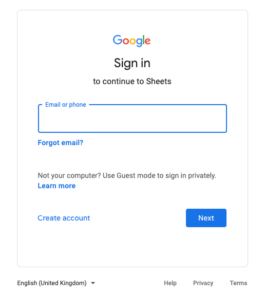
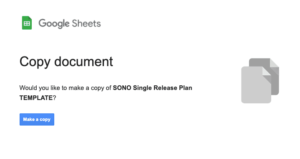
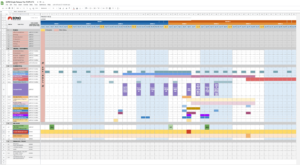
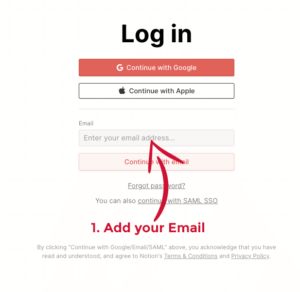
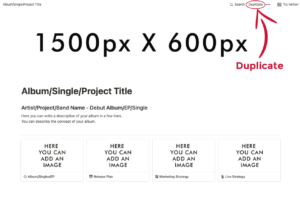
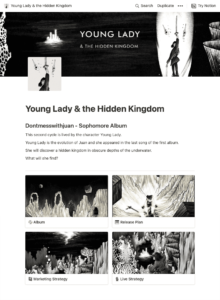
 Official Website:
Official Website: 
 Official Website:
Official Website:  Official Website:
Official Website:  Official Website:
Official Website:  Official Website:
Official Website: 



 Official Website:
Official Website: 














































































































 Official Website:
Official Website: 






















































































 Official Website:
Official Website: 


















